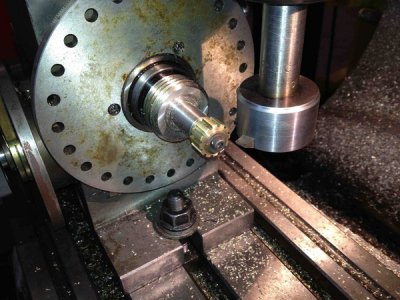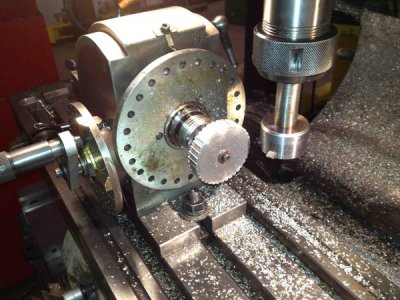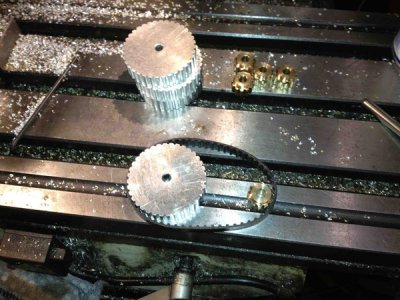- Joined
- Jan 5, 2014
- Messages
- 995
So, I have this nice big DC motor with a very low backlash reduction gear on it lying around in the dust. I was thinking about making a bolt-on computer-controlled indexer attachment for my lathe. But, I need to make a big timing belt pulley that bolts onto the back side of the head stock (where the spiders usually are). Probably a 1" wide x 4" diameter aluminum timing pulley. I have a milling machine and a minimum set of lathe tools and end mills. What is a reasonable setup that I can use to make the pulley? I guess I could just buy one and bore out the center to fit the lathe spindle but I'm here to machine stuff... I figure if I could do it for maybe $60-$100 in tooling I would make it, else I would buy it. Thanks ahead of time.



